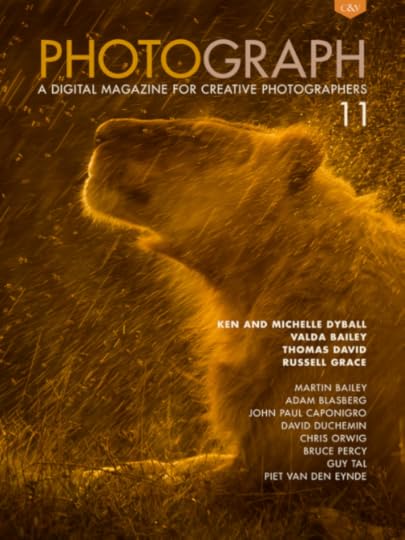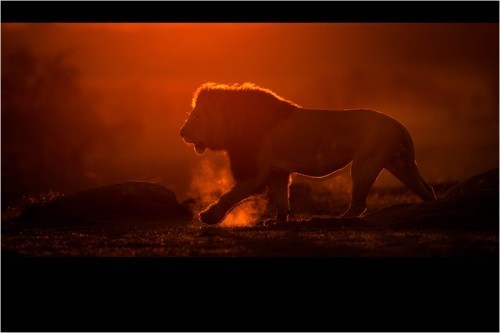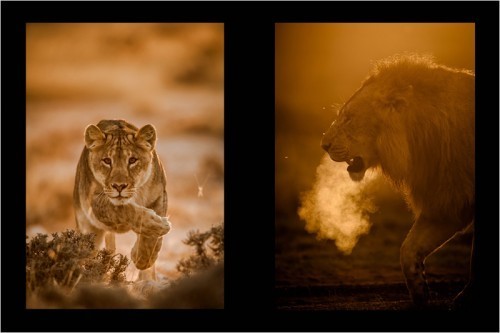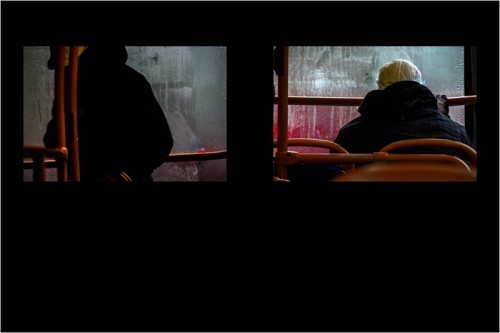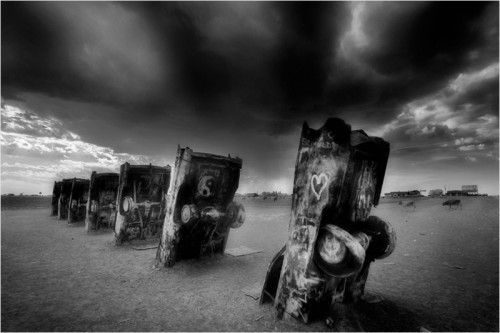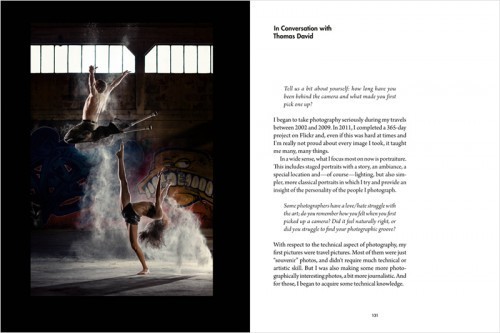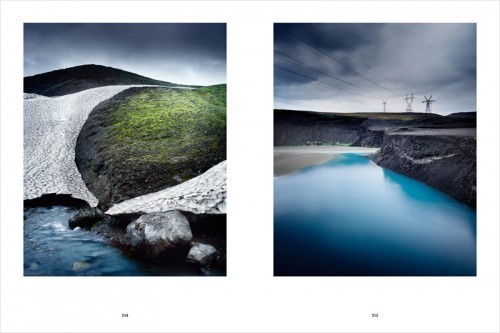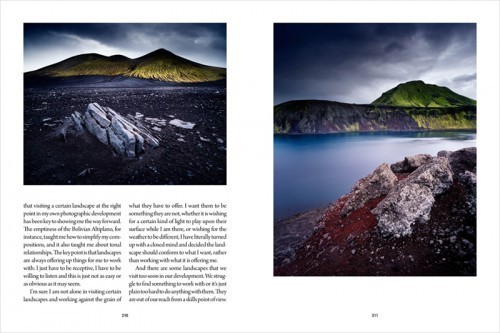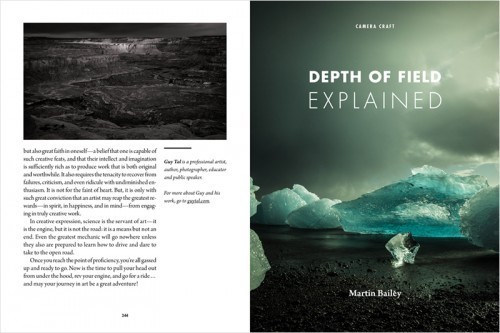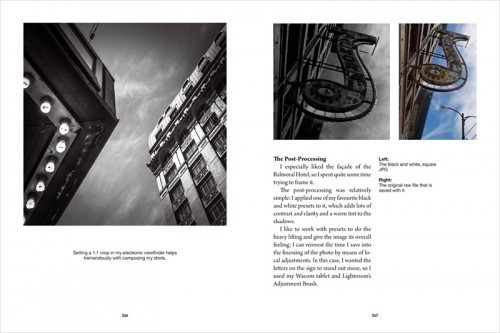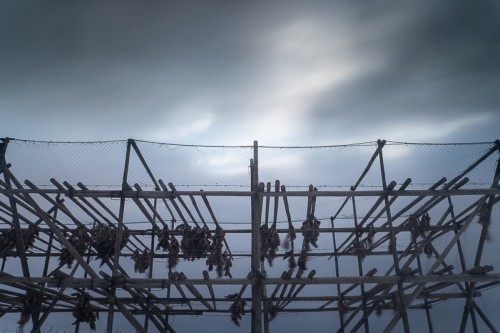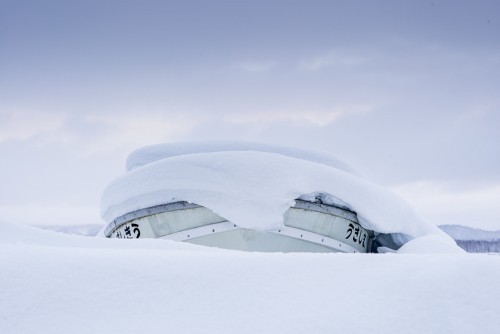David duChemin's Blog, page 19
February 7, 2015
The Travelling Photographer
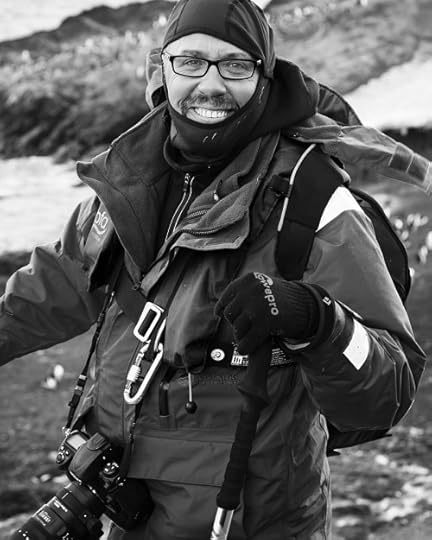
“Wherever you go, you take yourself with you.” ~ Neil Gaiman
In Hokkaido last month one of the guys I was traveling with made an astute observation, that no matter where we travel as photographers, we will always have the same creative struggles as we do at home because “we take that same photographer with us wherever we go.” Indeed. As I gear up to launch SEE THE WORLD on Wednesday, and to head to Kenya on assignment later this same week, I’m turning my own thoughts to one of the things I love most in this world: traveling the world with my cameras.
The camera, for me is only an excuse to travel. It’s a thing I bring with me to help me see the world and life as it passes, with greater attention and intimacy. If I make a photograph that’s significant for myself or others, then that’s a bonus. Every year people criss-cross the globe, strapped to their cameras, in search of amazing photographs; often those photographs are of exotic things, like camels, men with turbans, or Eiffel Towers. Often those photographs are little more than a poor copy of one or another of the hundreds of photographs of the same things that others before them have made.
It is worth remembering two things. First, it is very easy to get seduced by what is novel or exotic, and easier still to allow ourselves to believe that that is enough to make a good photograph. It is not. The things that make a good photograph are the same in Venice or Timbuktu as they are at home. The second is that while traveling can open our eyes to things we’ve not seen before and might therefore see them more clearly than we would at home, the photographer we bring with us is the same one we are at home. Don’t kid yourself: going somewhere else won’t make you a better photographer than you are at home.
Ralph Waldo Emerson said it well when he said, “Though we travel the world over to find the beautiful, we must carry it with us, or we find it not.” If you don’t see beautifully at home, you will not see beautifully in someone else’s home. The airplane transports us, it does not transform us.
If you want better photographs, no matter where you are, it comes down to that intoxicating mix of light and moments and lines and the choices you make about how you place those things in the frame. It is not good merely because you are in Paris. Over a hundred years of photographs made in Paris, and there are at least as many lousy ones as there are beautiful, compelling ones. You will still have to rely on having open eyes and on understanding composition. There is no such thing as “composition for travel photography.” I’m not even sure there’s such a thing as travel photography, per se. And there isn’t really, though I’ve used the words myself, such thing as a Travel Photographer. There are photographers who travel, but their work doesn’t move us emotionally just because they themselves are in constant motion. So what makes for stronger travel photographs? That’s the subject of the 20 lessons in SEE THE WORLD, but in short, this: that you deeply experience a place, that you learn to see, that you connect with people and spend time and abandon your expectations. And yes, that you make photographs that express those experiences, tell stories, communicate mood. It’s not about the camera, or your choice of luggage or tripod. How you do those things is the subject of the book and I can’t wait to share it with you.
The photographer you take with you will be the one making the photographs, so if you want stronger travel photographs, now’s the time to work on that photographer.
SEE THE WORLD is a downloadable PDF eBook. It launches on Wednesday, February 11. For the first week it’ll be on sale for $15 (regularly $20), and every one that picks it up during that first week will be entered to win a Fuji X-E2 and 18-55mm lens.
February 3, 2015
Commodity Failure: A Rant
Oh, am I going to catch shit for this one…
Every once in a while, despite my best efforts to keep my head down and avoid this stuff, I hear someone complain again about “amateur” photographers (don’t even get me started on the term faux-tographer, I’ll have an aneurism) cannibalising the photography market because they work for less than industry standard, or – God help us – for free. And then these complainers head off to Walmart to get their discounted goods. Sigh. I’ve done so well at restraining myself lately, and haven’t had a rant for ages, but God help me, I’m about to jump down this rabbit-hole.
Most of us conduct our business in a free-market economy. People offer things for sale, and people buy those things. The price is determined by the value you offer. And yes, if someone offers something for free, it can sting. And it can make you want to complain. And lash out. Because that’s easier than getting creative about finding a solution, and it’s sure as hell easier than recognizing that if someone is hiring a Craigslist photographer for $1.50 instead of you, they clearly don’t see (this is going to hurt) enough value in what you offer to pay for it. In short, you think it’s more valuable than they do, and that’s a problem. You know whose mind is easier to change? Yours. You will change their mind only when you change the value of what you offer.
Lada could give cars away for free and you won’t hear Ferrari complaining about it. Ferrari aren’t just selling cars; they’re selling sexy, prestige, and the colour red. You still think you’re selling photographs.
You, my friend, have allowed yourself to become a commodity. You are just selling average photography, and someone else is giving average away. It’s the way it is. And the only way to combat it, is not legislation or licensing or accreditation with some Governing Body of Mediocrity. It’s to find a way to offer something valuable enough for people to pay for it. That is the skill of being a professional photographer. It’s in making something of value to someone and making that connection. If only you were as creative with your business as you are with your photography. If only you studied your marketing as well as you studied the B&H Catalog. If only you spent more time connecting to your audience, listening to their needs, and finding ways to make exactly the thing you want to make, in such a way that it uniquely meets their needs. That is what people pay for.
The world is full of painters, many of whom, like photographers, are pretty mediocre. Picasso, as an extreme example, is not a commodity. He is a brand, even if he’s long dead. And people pay millions for it. People could give away cars and there’d still be a market for Porsche and Ferrari. And you wouldn’t hear Ferrari complaining about it. Because they aren’t just selling cars; they’re selling sexy, prestige, and the colour red. You still think you’re selling photographs.
Business models change all the time. Some of them are easier to work with than others. Some help us for a time and then turn on us. But the same people that are groaning about amateurs doing work for free or less than industry average are the same people groaning about Facebook starting to charge for the value they offer. Stop whining, do some soul-searching, raise your prices, and give people so much value they’d be happy to pay twice that. Not realistic you say? Then you need to get creative. That’s the hard work.
“In the fast moving water of commerce on which we float this boat, the only thing that’s going to make a difference is how hard, and in which direction, you paddle. The rapids aren’t listening to your thoughts about how unfair the other guy’s paddle is, or how he should have built his boat with the same flaws as yours.”
I don’t give a tinker’s damn whether you are a professional or not. I love photography as an art and art is meant to be given away and any amateur out there that makes great art for the love of it, and gives it away, will get nothing from me but cheerleading. If they’re professionals, or want to be, they’ll go bankrupt soon enough by ill-choosing a business model that doesn’t pay the bills. So that’s their choice. Your choice is how you will offer such value that people will pay for it, it’s in learning to apply the craft of commerce as creatively as you do your photography. It’s in opening your heart and mind to new possibilities in a changing marketplace that might not be fair, but is what it is, and won’t respond to whining or wishing. Sometimes it sucks, I know that. It stings when we get complacent only to find our marketshare snapped up by some young buck with a camera and the hunger to do what it takes to build his business. But it’s our complacency to blame, nothing else. This is the way the world of commerce has worked for hundreds (thousands?) of years.
I know I sound antagonistic. I don’t mean to be. My greatest hope for you is that you find a way to do what you love, in the way that gives you both a good life and a good living. And God knows it’s not fair when the business model we relied on changes. But you can be right or you can be happy. If you want to be right, if that’s enough for you, then keep griping. It won’t help, but you’ll feel justified. If you want to be happy, then do something. Change the way you do business. Find new collaborations. Question everything you thought you knew about business. Listen to your audience, or maybe find a new one. But do something, because in the fast moving water of commerce on which we float this boat, the only thing that’s going to make a difference is how hard, and in which direction, you paddle. The rapids aren’t listening to your thoughts about how unfair the other guy’s paddle is, or how he should have built his boat with the same flaws as yours.
February 2, 2015
Finding Vision?
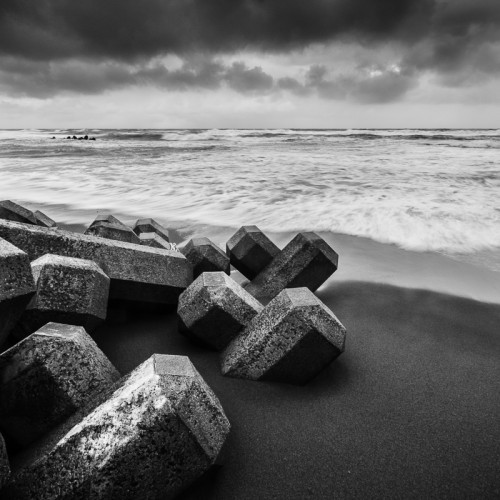
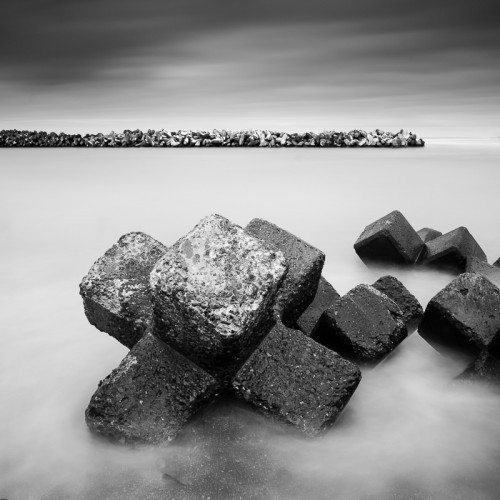 Tetrapods in the Sea of Japan. Hokkaido, 2015.
Tetrapods in the Sea of Japan. Hokkaido, 2015.
I spent way too long last week trying to come up with a way to express something in the 140 characters that Twitter allows. I had seen something in one or another of my social media streams, something about a course where you can “find your photographic vision.” There was something about how it was written that got my knickers twisted, maybe because a couple years ago I would have used similar words and I think I’ve grown in my understanding. Maybe because I worry some of you are going to fall for it.
Photographic vision is not something you look for, it’s something you look with; a way of seeing the world. Or so said my tweet. What I wanted to say is this: it’s not something I look for just once, find, and then move on to making photographs, content in the knowledge that the painful work of “finding my vision” is behind me. It is, if it’s anything more than just an imperfect metaphor, a changing way of seeing the world, one that evolves as we do. It’s not something you find, then move on. It’s the changing answers to the ever-present question: how do I see the world?
As we change, and as the world around us changes us, and the information and experiences we have of that world also changes, so will our vision. And so will the way we express that vision.
The question is not: “Do I have vision?” Because you do. It is not really “How can I refine my vision?” Because I think your vision refines you and not the other way around.
Maybe we’re chasing the wrong thing. Maybe it’s enough just to be aware of the role of vision, and to create in alignment with it. I do think being aware of what we feel and think and want to say, is important, especially at the beginning when we’re not as intuitive as we think we are. But like anything, it’s easy to make a religion of it. It’s easy to look for something so earnestly, to want to find something so badly, that we lose the joy of it. And maybe it’s enough just to be assured that it’s there – your vision – and stop fretting so much about it.
Let me try one more metaphor. I wear eyeglasses. They are, literally, the lenses through which I see the world. They are important. I need to remember to put them on, and I need to clean them occasionally. I need, as I change, to get the prescription changed once in a while. But I do not walk around looking at the lenses in front of my eyes. I’d go cross-eyed. I’d stop focussing on the world beyond. I’d miss the astonishing moments, the colour, the light. Once in a while I lose the glasses and go on a hunt to find them, sure. But it’s seeing clearly that is the point. It’s life out there and the ability to express something about that life, that is the point. At least for me.
The hard part isn’t finding your vision. It’s keeping up with it. It’s finding true ways to use our craft to its very limits in order to express that vision. It’s working hard enough to master it, but not so neurotically that we lose the play, the joy, the wonder.
Maybe that’s what’s behind my Gear is Good, Vision is Better mantra. It’s a reminder, first to my so-easily distracted self, to focus on what we see, and how we see it, not the tools, to look beyond the lenses and the frames of my eyeglasses, and just see – really see – the world, and all it contains.
January 28, 2015
PHOTOGRAPH, Issue 11
When I met Ken and Michelle Dyball, who created a stunning featured portfolio in the latest issue of PHOTOGRAPH magazine, they were managing a small safari lodge on the Maasai Mara in Kenya. Before we got there we stopped at a hippo kill, to watch the lions eat the massive body. Across from us, a kitted-out Land Cruiser from which some some very long Nikon lenses were emerging. Michelle was taking one shift, photographing a several-day time lapse of the carcass and its return to the earth, while Ken waited for us at the camp. Over the coming days we began to appreciate our hosts for their sense of adventure and love of the wildlife they were surrounded with. When I saw their work I knew we had to feature it in the magazine. There’s something emotional about their work, something more than what wildlife photography is so often reduced to: mere illustration.
Ken & Michelle’s work is joined by the colourful work of Valda Bailey in her Bus No.8 series, the dramatic high energy Dust & Dance series from Thomas David, and the black and white infrared, America in the Best Possible Light series from Russell Grace. Our usual contributors are all there with some great writing and beautiful images, including Bruce Percy’s Natural Light column which particularly resonated with me. Really great stuff. I’ve included a quick look at a few of the pages, but you can see more on the C&V product page.
PHOTOGRAPH 11 is now out. As always, as a thanks to our regular readers, if you get it before 11:59 PM (PST) on Tuesday, February 3, you can save 20% and pay only CAD $6.40. Think of it a subscription that you’re not locked into. Almost 300 pages of beautiful photographs, great writing and down-to-earth teaching. We’re working hard to make it the best value in photographic education and inspiration. See the PHOTOGRAPH Collection.
January 26, 2015
See The World Packing List

On February 11 we’re releasing SEE THE WORLD: 20 Lessons for Stronger Travel Photographs. As I gear up for it, and start packing for the trip to Kenya that follows hot on its heels (I leave February 15), I thought I’d give you a copy of my own packing list. I’ll drop it down at the bottom of this post so those of you not using Evernote can copy/paste it and adopt it to your own needs. But for those using Evernote, you can download the list and take advantage of the check boxes, etc. I use a new copy each time I travel, spend a moment deleting what I don’t need, and adding a few things I do, and then I’m ready to pack.
The book itself is mostly not logistics stuff – it’s about making compelling photographs of the places we experience, and experiencing those places more deeply in order to do so. But some of the more frequently asked stuff made it in there too – stuff about carry on bags and tripods, for example. It’s a meaty book, free of platitudes, and – I hope – refreshingly honest about the stuff that actually makes for stronger photographs, and it’ll be out soon. If you get it during the first week of release you’ll save 20% and your name will be put in the hat for a new Fuji XE-2 and 18-55mm lens. In the mean time, get packing!
Download the Evernote Note here. (It’ll download as a zip file because WordPress didn’t like the Evernote .enex file) Below you will find the complete list and notes in text format. Feel free to copy/paste. Any questions about the list or the way I travel, feel free to drop them in the comments. The formatting went a little weird and WordPress isn’t playing nice, so you just might want to download Evernote. It’s free.
This is my own packing list which you can adapt to your needs. I use a new one for each trip, renaming it – for example – KENYA 2014. It allows me to see what I brought on each previous trip and make notes about things I might have forgotten or could have left at home.
Where I have my own brand preference or recommendation I note it in a parenthetical or italicized comment. (Feel free to delete anything in italics to begin your own list.) These are based purely on my own preferences in terms of fit, budget, and quality, preferring to buy quality that I can rely on once rather than something I have to replace more often)
This list assumes a 7-14 day trip. It assumes I can buy the odd thing if I need to, and get laundry done at some point, even if just in the sink.
This list also assumes my own preference in shooting, so if you can’t work without, for example, strobes and soft boxes, be sure to add those.
This list does not assume specialist activities, like photographing wildlife, but those needs should be obvious – adding things like long lenses and gimbal heads as you need.
Add to this list, or delete from it, I hope it helps as you prepare for your own adventures.
_______________________________________________________
CAMERA GEAR
1 or 2 Camera Bodies
Camera Batteries (minimum 3 for each – one in camera, one in pocket, one charging)
Wide lens (16-35mm)
Standard lens (50mm)
Longer lens (85mm or 70-200mm)
SD or CF cards (I use 64GB cards, and pack 4-10 of them depending on duration of trip, and never format them until I am home)
2-3 Micro fiber lens cloths
Sensor clean kit – swabs, brush, and one of these: http://www.adorama.com/IPXISCK.html
If I anticipate landscape opportunities:
Tripod
Cable Release
Lee Filter Holder and adaptor rings
Polarizing Filter
ND Filter
Graduated ND Filter
If I anticipate heavy inclement weather:
Think Tank Hydrophobia rain covers
Small kitchen-sized garbage bags (I bring a couple and use them to prevent condensation when moving from very cold into very warm)
Extra lens cloths, small dish towel or bandana to dry gear.
Small travel umbrella
_______________________________________________________
ELECTRONICS
Laptop (11” MacBook Air)
Laptop charge cable
Small SSD drive
iPhone, and charge cable
Headphones (Bose earbuds. I like the ones with built-in microphone so I can Skype or podcast if needed)
Local plug adaptor if needed (How do you know if you need one? Check this site: http://whatplug.info/ )
Small multi-outlet power strip (so I only need one adaptor and can charge multiple devices/batteries at once.)
Small flashlight or headlamp, fresh batteries
* I put all my cables and chargers into one pouch. GuraGear makes some nice ones.
_______________________________________________________
PERSONAL GEAR
Sunglasses
Spare eyeglasses
Small first aid kit
Small repair kit – duct tape, crazy glue, knife / multi-plier, small screwdriver, tripod wrench
Meal bars ( I usually have a handful. I’m diabetic, so this might be more important to me than you)
Personal Toiletries (including CampSuds or something environmentally friendly with which I can wash underwear and socks)
Medication (All important meds stay in carry-on luggage, and bring more than you need)
Wallet (I leave unnecessary ID at home. For money I bring some local cash, and rely on my ATM card or VISA. The more remote I am, the more local cash I bring and less I rely on the cards. )
Passport (copies of passports and important documents all sitting on my Dropbox as well. Dropbox.com)
Travel Medical Policy card
Medical Evacuation Policy card (US and Canadian residents, consider MedJet Assist. I will never leave home without this policy.)
_______________________________________________________
CLOTHING
4 shirts (I prefer long sleeve button up shirts made of cotton (Filson makes great shirts from something they call Feather cloth) but some of the synthetic options are nice and they dry quickly. I almost always keep one folded and in reserve in case i need something sharp-looking or want a clean shirt for the flight home. Lighter colours get dirty faster, so most of my shirts are navy blue. )
4 pairs underwear I use merino wool, which wash and dry easily and retain no odour (Icebreaker)
4 pairs socks (see note above, re. merino wool)
2 pairs of jeans or khaki pants (Nice jeans are almost universally acceptable now, and with a clean shirt they can dress up nicely.)
1 pair comfortable boots or shoes (I prefer Blundstone leather boots, without laces, for easy slide on, slide off at airports, churches, mosques, shrines, etc.)
1 sweater (cashmere or merino, the latter being from Icebreaker)
1 baseball hat to keep off sun and rain
1 jacket (Filson Guide Work Jacket or Patagonia)
1 light rain jacket (Patagonia)
*
Clothing – Cold
If the weather is going to be (very) cold I will add:
Warmer sweater (Patagonia, wool or fleece)
Warmer socks (Icebreaker, merino wool)
2 light wool t-shirts (Icebreaker, merino wool)
Long underwear (2 pairs, tops and bottoms, Icebreaker, merino wool)
Thin gloves, something I can shoot in (I have a pair of Lowe Pro gloves I like)
Thicker gloves (Patagonia)
Warm hat (Icebreaker, merino wool)
Warm jacket (Patagonia or Canada Goose)
Warm boots (Keen)
Scarf
Rain pants (Patagonia H2No)
*
Clothing – Tropical
Sandals
1-2 pairs shorts, 1 doubles as swimsuit
Swap 2 long-sleeve shirts for 2 short sleeves
Sun block
Water housing for camera, mask and snorkel if applicable
*
_______________________________________________________
OTHER RECOMMENDATIONS
I have a Filson Guide Work Jacket that I love – lots of pockets, great for travel, and if you use smaller systems, the pockets are great for a lens or two. http://www.filson.com/products/guide-work-jacket.10415.html
I also have a couple ScotteVest products – My first choice is their original Travel Vest. Their Puffer Jacket is great in the cold, and their QUEST vest is excellent too. http://www.scottevest.com/v3_store/Travel_Vest.shtml
I have used Gura Gear bags for several years and been very happy with them. Think Tank Photo also makes excellent bags I still use. My current favourite for small gear travel is the Think Tank Airport Essentials – it won’t hold much in the way of pro-sized gear but for a couple mirrorless cameras, 3 lenses and all the trimmings, it’s perfect, and it’ll hold a laptop. http://www.thinktankphoto.com/products/airport-essentials.aspx
For urban travel, my checked luggage is Rimowa. For adventure travel it’s North Face’s Base Camp Duffles.
For security products, check out PacSafe’s full range of lockable products. I no longer travel with any of these, but that might be over-confidence. I prefer vigilance to carrying more stuff. But a couple luggage locks isn’t a bad idea.
If you plan to be remote, power becomes an issue. Consider something like the Goal Zero Sherpa 100 kit, which comes with solar panels, power pack, and inverter, and weighs about 5 lbs. You can add to this various cables to charge from vehicle 12v sockets and straight off battery terminals. This kit will allow you to keep charging laptops, cameras, and smart phones. http://www.goalzero.com/p/211/sherpa-100-solar-kit
I often download a language app, city map, or other helpful apps specific to my destination, before I leave. A couple minutes in the Apple App Store can be very helpful.
There’s a fine line between paranoid and well-prepared, but I keep copies of all my important documents on my Dropbox in case something goes wrong. This includes copies of my passports and tickets. If my laptop were stolen or died, I could access almost everything important. Before Dropbox I used to just email it to my Gmail account so I could log in from anywhere to get it.
January 22, 2015
Talking Money with Zack Arias
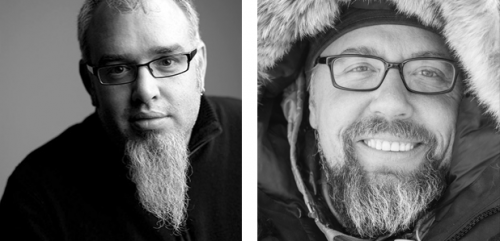 Months ago I wrote a post called Photographers and Money, We Should Talk. The blog post seemed to get a lot of traction and generated a lot of comments and questions.
Months ago I wrote a post called Photographers and Money, We Should Talk. The blog post seemed to get a lot of traction and generated a lot of comments and questions.
Since then I’ve wanted to get my friend Zack Arias on the line and record a conversation about this stuff, because Zack’s made almost as many mistakes as I have, and has learned from them and spends his days making a living with the thing he loves. He is a man of integrity and, like me, a fan of the amateurs and anyone trying to do this for a living, whether that’s full-time, part-time, or some time in between. Between his chaotic schedule and my travels it’s taken 5 months to make this happen, but sat down this morning and had a conversation. I recorded it. Skype dropped us a couple times and the sound has some flaws, but I hope you’ll sit down with us and listen to this 55 minute conversation about money. Even more, I hope you’ll learn something, or be encouraged to make some changes. Getting your house in order financially, running a business, trying to do this for a living, it’s not easy – but I wouldn’t have it any other way.
https://s3.amazonaws.com/DAVIDDUCHEMIN/Audio+Files/duChemin+and+Arias+Talk+Money.mp3
To download the MP3 file, instead of streaming, click on this link.
Zack Arias is a full-time photographer from Atlanta, Georgia, the author of Photography Q&A, and his blog can be found at DEDPXL.com
If this conversation stirs something in you, I’ve written two books – VisionMongers, Making a Life and a Living in Photography, and How To Feed A Starving Artist – I wrote both to serve photographers wrestling with the business and financial stuff. I hope they help.
We’re all in this together. I might not have the answers, but I can try and I’d love to help if I can – comments are open if you’ve got a question about what Zack and I talked about, or perhaps something that never made it into the coversation.
January 20, 2015
Hokkaido Boat Abstracts
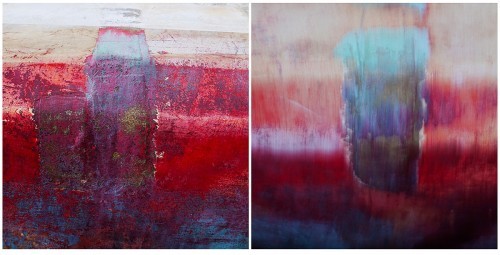
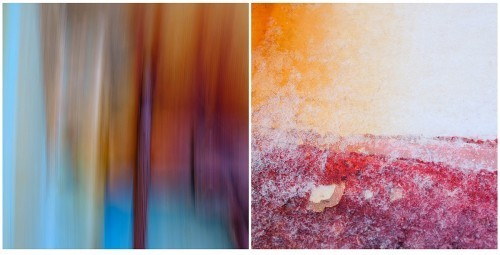
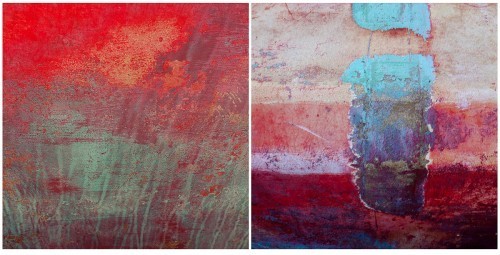
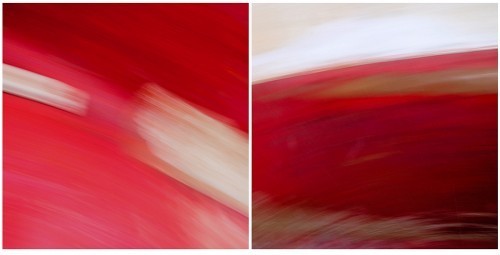
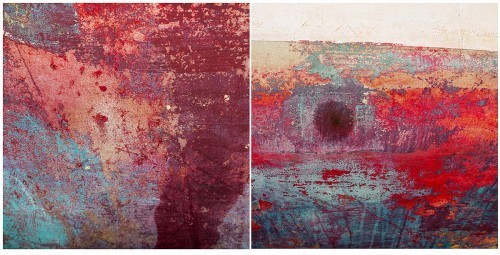 Halfway through this last trip to Hokkaido my brain needed a break from all the white, elegant, graphic stuff. Beautiful, to be sure, but I needed something tangental, something different. In part, I think, I wanted something manmade, probably longed for some colour as well. What I found in the old boat yards, the boats all up on blocks, some for just the winter, some – one sensed – for the rest of their lives, was exactly what I needed. Layers of paint, and fiberglass patches, combined with years of salt water, and the push of waves to create some amazing patterns, colourful accidental, wabi-sabi. Some of the images are just tightly framed, literal photographs, some are double exposures (made in-camera with my Fuji XT-1), and some include camera motion. All of them, I think, made by a collaboration between the fishermen who own and maintain these boats, the water and weather in which they ply their trade, and my own craft. Some try to conjure up the waves and rhythms of the sea, some are just a recognition of beauty in the colours and patterns.
Halfway through this last trip to Hokkaido my brain needed a break from all the white, elegant, graphic stuff. Beautiful, to be sure, but I needed something tangental, something different. In part, I think, I wanted something manmade, probably longed for some colour as well. What I found in the old boat yards, the boats all up on blocks, some for just the winter, some – one sensed – for the rest of their lives, was exactly what I needed. Layers of paint, and fiberglass patches, combined with years of salt water, and the push of waves to create some amazing patterns, colourful accidental, wabi-sabi. Some of the images are just tightly framed, literal photographs, some are double exposures (made in-camera with my Fuji XT-1), and some include camera motion. All of them, I think, made by a collaboration between the fishermen who own and maintain these boats, the water and weather in which they ply their trade, and my own craft. Some try to conjure up the waves and rhythms of the sea, some are just a recognition of beauty in the colours and patterns.
Click the top image and it’ll get larger and you can scroll through them from there. 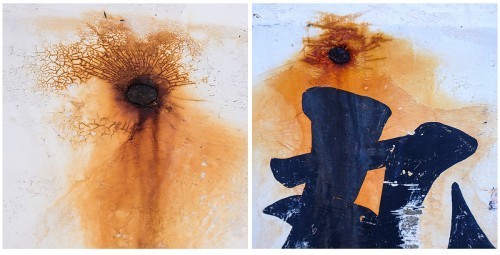
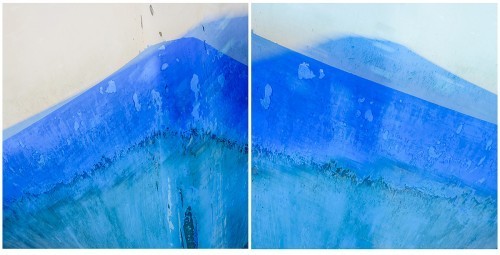
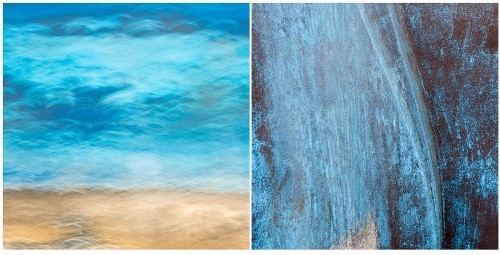
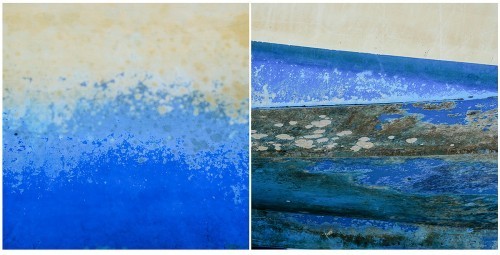
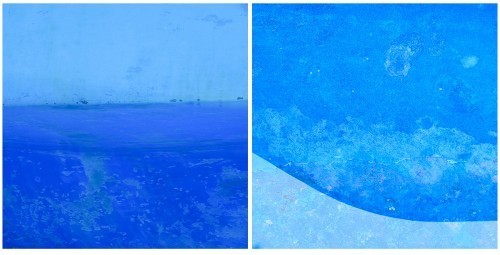
January 18, 2015
Back from Hokkaido

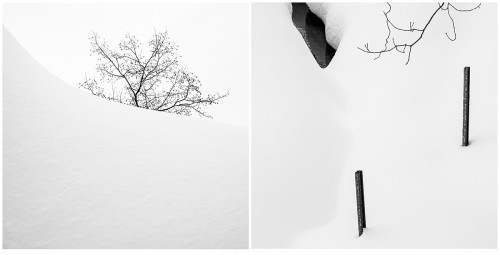
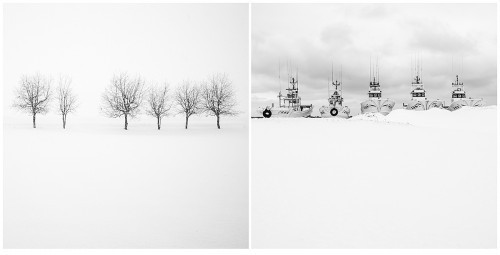
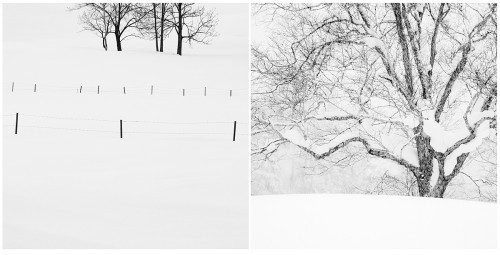
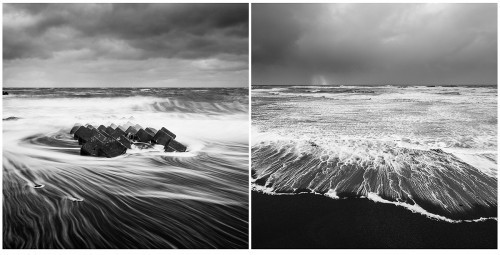 I got in from Japan yesterday and dove headlong into the blur of jetlag. By now I’m pretty good at the auto-pilot chores and the mindless digging out from the pile of things accumulated in my absence. It’s not just jetlag that makes it hard, but the more whole-body confusion that results from longing to be back where I just left while trying to be present here and at the same time plan for the next trip, which is only a month away. Less jet-lag and more nomadic dissonance.
I got in from Japan yesterday and dove headlong into the blur of jetlag. By now I’m pretty good at the auto-pilot chores and the mindless digging out from the pile of things accumulated in my absence. It’s not just jetlag that makes it hard, but the more whole-body confusion that results from longing to be back where I just left while trying to be present here and at the same time plan for the next trip, which is only a month away. Less jet-lag and more nomadic dissonance.
Hokkaido was amazing. Last time it was wildlife, this time short lenses and tripods and standing in waves or up to my waist in snow. Evenings were spent with friends, drinking sake, singing karaoke (we did this once: that was more than enough for most of those involved. (Toto, I apologize for the horrors I visited upon your beautiful song, Africa.) We slept those nights off in nice hotels, most of them with lovely food, many of them with traditional rooms and futons on the floor. And each morning we were back at it, lugging gear to the bus, then to the beach, stopping once in a while to refill supplies of weird-flavoured Kit Kat bars and sake at convenience stores along the way.
This time I shot a couple series of images – one square and black and white, the other (like the top image) in a soft warm/cool palette, and yet another of colourful abstracts of from the fishing boats, which I’ll post in a couple days. There’s something incredibly elegant, simple, and graphic about Hokkaido, something that feels particularly wabi-sabi about the place, which is the idea that I had bouncing around in my head the whole time. “Wabi-sabi,” writes Leonard Koren on the back of his book, Wabi-Sabi for Artists, Designers, Poets, and Philosophers, “is the quintessential Japanese aesthetic. It is a beauty of things imperfect, impermanent, and incomplete. It is a beauty of things modest and humble.” That idea, or my incomplete understanding of it, was behind the images I made on this trip. I’ve only just started pairing them, editing them down, but the work already seems on some level to have succeeded. The images feel, to me, earthbound and rooted, Japanese-inspired, but universal.
Coming days are full of chores and waking up (unwillingly) long before the sun. My next assignment is in Kenya for the Boma Project, and between now and then there’s the pile of things that fills the days of most photographers I know. But I get to be surrounded by photographs, and there’s nothing more I’d rather do. Except seeing the world, but that comes soon enough. Before I leave for Kenya I’ll be releasing See The World, Twenty Lessons for Stronger Travel Photographs – it’s large (over 200 pages), beautiful, and in addition to as much as I could cram in about making better photographs about the places we travel, has interviews with Bob Krist and Art Wolfe, packing lists, thoughts on bags and tripods, and all the others stuff – but mostly it’s the stuff you won’t find online when you reasearch travel photography and you get flooded with platitudes. Look for it on February 11. Like my other eBooks, it’s a downloadable PDF and it’ll be on sale for the first week.
January 10, 2015
Postcards from Hokkaido
 When I came to Hokkaido for the first time for a wildlife tour in 2013, I fell in love with the place. It’s vast, wild, elegant, and her people live close to the land. I left with a longing to return, so when Martin Bailey asked me to come back and do this trip again, but with a landscape emphasis, I jumped on it and we started planning. 5 days ago a number of old friends, and a handful of new ones, met Martin and I in Tokyo, though Cynthia and I arrived a few days before that to spend some time with a couple close friends. We spend our days, short as they are (Sunrise around 8, sunset around 4) in driving snow, nearly gail-force winds, amazing land and seascapes, and the company of people who love being in wild places with cameras in hand. We spend the evenings in the onsens, Japanese natural hotsprings baths, and eating dinner and drinking sake (usually one after the other, though I’m open to the idea of taking the sake into the baths!). It’s a wonderful trip. You can see some of my work here, and a taste of the black and white images over on my Instagram page.
When I came to Hokkaido for the first time for a wildlife tour in 2013, I fell in love with the place. It’s vast, wild, elegant, and her people live close to the land. I left with a longing to return, so when Martin Bailey asked me to come back and do this trip again, but with a landscape emphasis, I jumped on it and we started planning. 5 days ago a number of old friends, and a handful of new ones, met Martin and I in Tokyo, though Cynthia and I arrived a few days before that to spend some time with a couple close friends. We spend our days, short as they are (Sunrise around 8, sunset around 4) in driving snow, nearly gail-force winds, amazing land and seascapes, and the company of people who love being in wild places with cameras in hand. We spend the evenings in the onsens, Japanese natural hotsprings baths, and eating dinner and drinking sake (usually one after the other, though I’m open to the idea of taking the sake into the baths!). It’s a wonderful trip. You can see some of my work here, and a taste of the black and white images over on my Instagram page.
December 27, 2014
Venice to Hokkaido via Vancouver
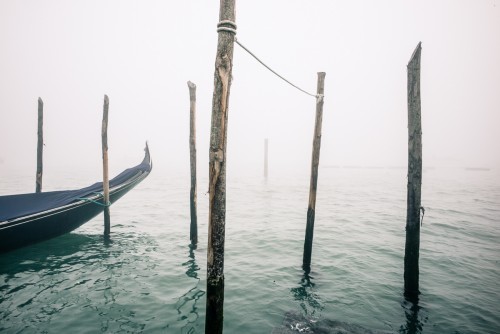 Saying goodbye is hard. When the person from whom you part ways is a city like Venice, it’s even harder. This trip more than any other has been amazing. With my surgery in February, and an uncertain recovery time, I didn’t think I’d get to Italy this year, so to be able to spend Christmas here, in a stunning little rented apartment on a canal, just out of reach of the tourist crowds, was an unexpected delight.
Saying goodbye is hard. When the person from whom you part ways is a city like Venice, it’s even harder. This trip more than any other has been amazing. With my surgery in February, and an uncertain recovery time, I didn’t think I’d get to Italy this year, so to be able to spend Christmas here, in a stunning little rented apartment on a canal, just out of reach of the tourist crowds, was an unexpected delight. 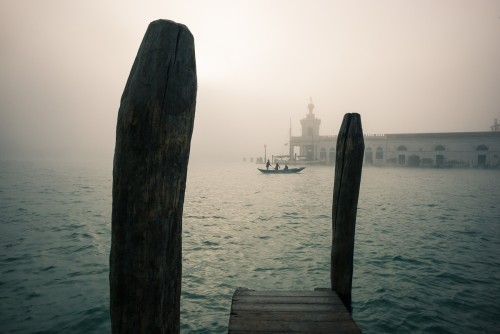
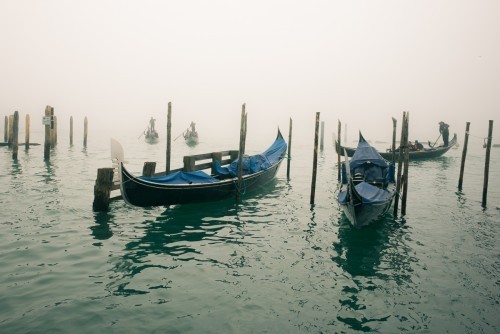
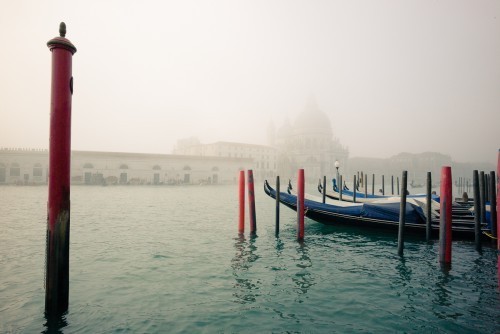
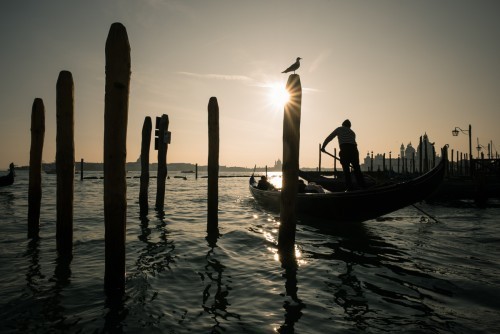 I wrestled this time, as I always do, but it’s usually my muse with whom I wrestle, and this time she showed up most days, full of ideas and the warm flame of inspiration. No, this time I wrestled with jet-lag. After 10 nights I’m still fighting it, and when you read this I’ll probably be on a plane home to Vancouver to do laundry, pick up some gear, and head to Hokkaido, Japan. So the struggle with jet-lag is only just gaining momentum. The short days and absence of any real sunlight probably didn’t help. But while it drove me to bed way too early every day, it made sure I was up early, and walking the streets, if not in search of photographs, then for a cappuccino and brioche. And on the way I found, as I seem to do more often when I’m not looking so desperately for them, some photographs I’m really excited to print.
I wrestled this time, as I always do, but it’s usually my muse with whom I wrestle, and this time she showed up most days, full of ideas and the warm flame of inspiration. No, this time I wrestled with jet-lag. After 10 nights I’m still fighting it, and when you read this I’ll probably be on a plane home to Vancouver to do laundry, pick up some gear, and head to Hokkaido, Japan. So the struggle with jet-lag is only just gaining momentum. The short days and absence of any real sunlight probably didn’t help. But while it drove me to bed way too early every day, it made sure I was up early, and walking the streets, if not in search of photographs, then for a cappuccino and brioche. And on the way I found, as I seem to do more often when I’m not looking so desperately for them, some photographs I’m really excited to print. 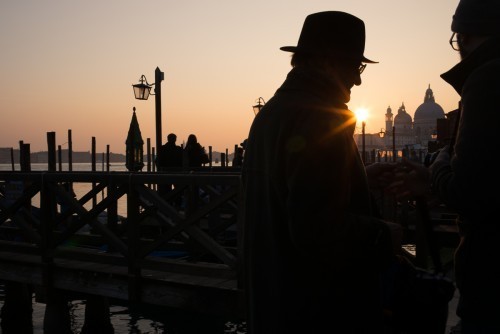
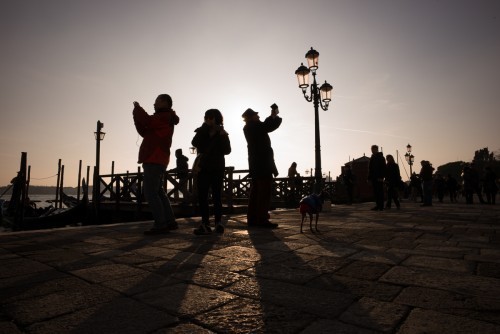
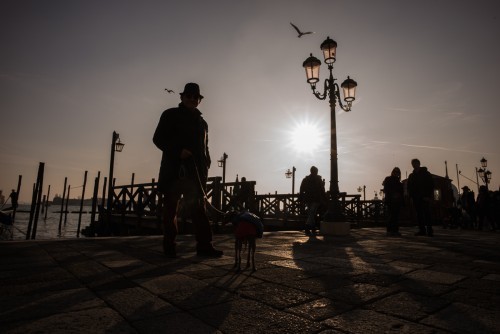
Venice, 2014. I’ve edited these on my 11″ Macbook Air, so there’s some colour/brightness tweaks needed, and Lord knows there’s probably a dust spot or two. As always, they look pretty small as thumbnails, but click on one and you should be able to scroll through all of them a little larger.
I went light this time. A Leica M (240) for digital and a Leica M6 for film. 21mm, 35mm, 50mm, and 90mm lenses. A bag of black and white film, of which I shot precisely no rolls, so taken was I by the colours. The Leica M continues to amaze me. It’s got its quirks for sure, but for this kind of work I set it to f/11 or so, zone-focus it, and expose manually and photograph to my heart’s content. The images are sharp and need almost nothing done to them, though I colour-grade most of them, or warm them up a little. It doesn’t do well in very low light (at high ISO), but then neither do I, preferring to put the camera away when it gets too dark and head off in search of wine. If I were shooting in the dark I’d prefer my Fuji X-T1 or X-E1, both camera I also love. But there’s something about the Leica that feels so much a part of me in my hands. Hard to explain, but if you’ve ever had a tool you loved with an illogical kind of devotion, and despite it’s quirks, then you know what I’m talking about.
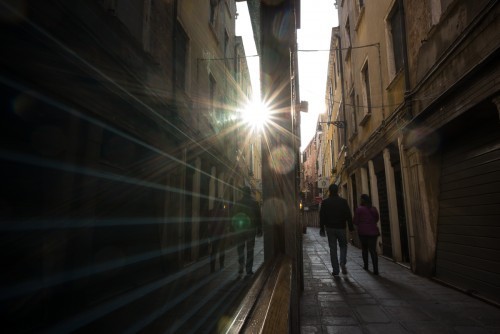
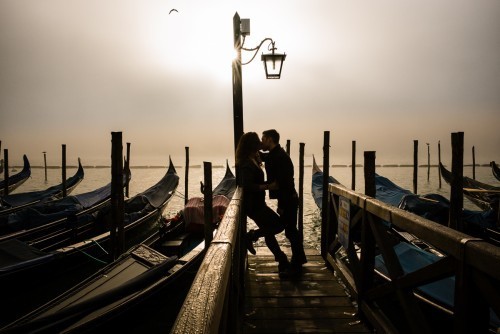 And now to Hokkaido. I’ll bring the same gear, but add my filters, a beefy tripod, and my Fuji X-T1 and a few lenses as a back up. Can’t wait. I hope you had a beautiful holiday, and wish you big adventures in beautiful light, with the ones you love, in the coming year.
And now to Hokkaido. I’ll bring the same gear, but add my filters, a beefy tripod, and my Fuji X-T1 and a few lenses as a back up. Can’t wait. I hope you had a beautiful holiday, and wish you big adventures in beautiful light, with the ones you love, in the coming year.

